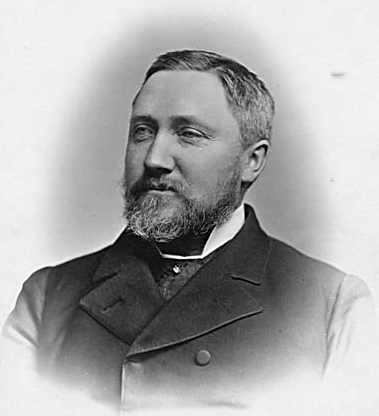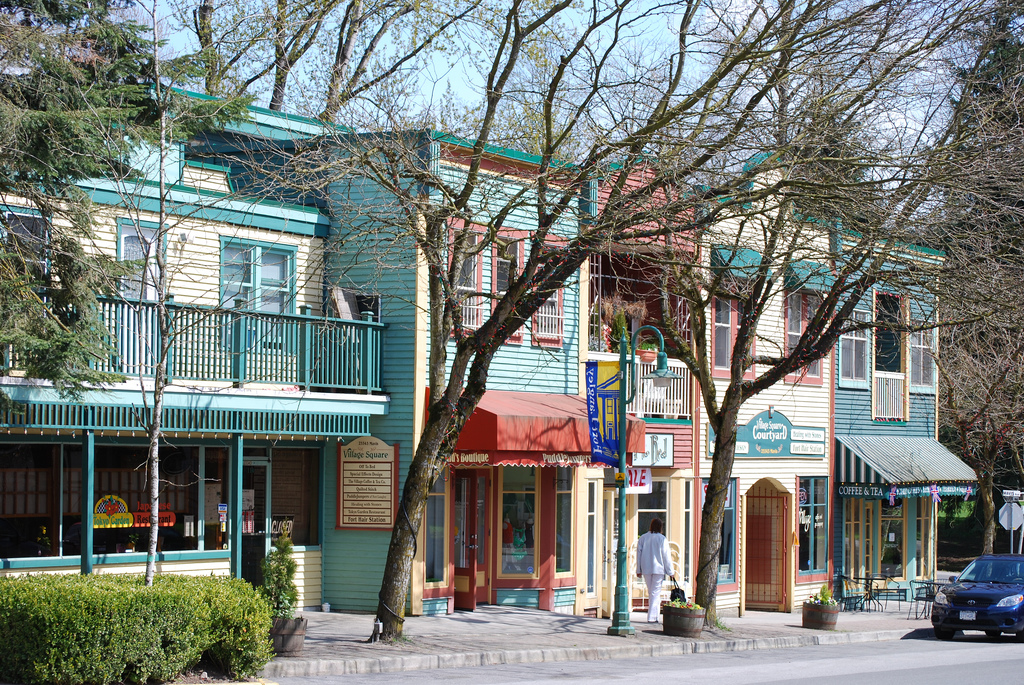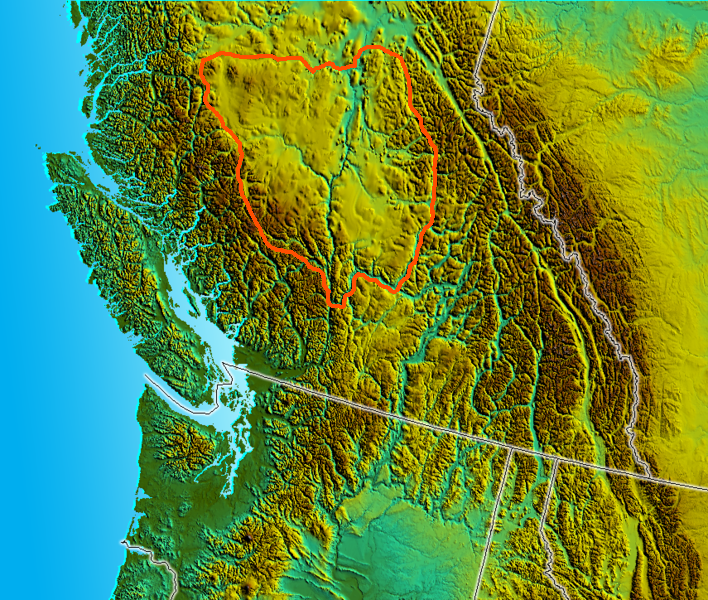|
Gregor Robertson (politician)
Gregor Angus Bethune Robertson (born September 18, 1964) is a Canadian entrepreneur and a progressive politician, who served as the 39th mayor of Vancouver, British Columbia, from 2008 to 2018. As the longest serving Mayor in Vancouver's history, Robertson and his team led the creation and implementation of the Greenest City 2020 Action Plan and spearheaded the city's first comprehensive Economic Action Strategy. Robertson was elected to the position of mayor of Vancouver as part of the Vision Vancouver slate. Prior to that, he served as a Member of the Legislative Assembly for Vancouver-Fairview, as a member of the New Democratic Party of British Columbia, from 2005 until his resignation in 2008 to run for the mayoral position. On January 10, 2018, Robertson announced that he would not seek re-election after three terms in office. Background Robertson was born in North Vancouver in 1964. His father was an attorney with Russell Dumoulin, a prominent Vancouver law firm, and his ... [...More Info...] [...Related Items...] OR: [Wikipedia] [Google] [Baidu] |
List Of Mayors Of Vancouver
The mayor of Vancouver is the head and chief executive officer of Vancouver, British Columbia, who is elected for a four-year term. The 41st and current officeholder is Ken Sim, who has held office since November 7, 2022. List indicates the individual died in office. Notes List of mayors who held higher office Two former mayors, Mike Harcourt and Gordon Campbell, went on to become premier of British Columbia. George Clark Miller, Sam Sullivan, Art Phillips and James Garden became members of the Legislative Assembly of British Columbia (MLAs) after being mayor. Larry Campbell became a Canadian senator after being mayor. Gregor Robertson, Charles Douglas, James Lyle Telford, Jonathan Webster Cornett and Charles Edward Tisdall were British Columbia MLAs prior to becoming mayor. Jonathan Webster Cornett was reeve of South Vancouver before becoming Vancouver mayor. Gerry McGeer was a BC MLA and provincial cabinet minister before becoming mayor of Vancouver a ... [...More Info...] [...Related Items...] OR: [Wikipedia] [Google] [Baidu] |
University Of British Columbia
The University of British Columbia (UBC) is a public university, public research university with campuses near Vancouver and in Kelowna, British Columbia. Established in 1908, it is British Columbia's oldest university. The university ranks among the top three universities in Canada. With an annual research budget of $759million, UBC funds over 8,000 projects a year. The Vancouver campus is situated adjacent to the University Endowment Lands located about west of downtown Vancouver. UBC is home to TRIUMF, Canada's national laboratory for Particle physics, particle and nuclear physics, which houses the world's largest cyclotron. In addition to the Peter Wall Institute for Advanced Studies and Stuart Blusson Quantum Matter Institute, UBC and the Max Planck Society collectively established the first Max Planck Institute in North America, specializing in quantum materials. One of the largest research libraries in Canada, the UBC Library system has over 9.9million volumes among it ... [...More Info...] [...Related Items...] OR: [Wikipedia] [Google] [Baidu] |
The Globe And Mail
''The Globe and Mail'' is a Canadian newspaper printed in five cities in western and central Canada. With a weekly readership of approximately 2 million in 2015, it is Canada's most widely read newspaper on weekdays and Saturdays, although it falls slightly behind the ''Toronto Star'' in overall weekly circulation because the ''Star'' publishes a Sunday edition, whereas the ''Globe'' does not. ''The Globe and Mail'' is regarded by some as Canada's " newspaper of record". ''The Globe and Mail''s predecessors, '' The Globe'' and ''The Mail and Empire'' were both established in the 19th century. The former was established in 1844, while the latter was established in 1895 through a merger of ''The Toronto Mail'' and the ''Toronto Empire''. In 1936, ''The Globe'' and ''The Mail and Empire'' merged to form ''The Globe and Mail''. The newspaper was acquired by FP Publications in 1965, who later sold the paper to the Thomson Corporation in 1980. In 2001, the paper merged with broadcast ... [...More Info...] [...Related Items...] OR: [Wikipedia] [Google] [Baidu] |
Happy Planet
Happy Planet is a private company in Burnaby, British Columbia, Canada, known for making organic juices and smoothies. The company was started in 1994 by Randal Ius and Gregor Robertson. They originally started out with one farm producing carrot juice. At first, the company supplied primarily natural food stores and small restaurants and cafes. Now their products can be found Canada-wide as well as in parts of the Pacific Northwest United States. At present, the company ships several thousand bottles of juice per week. Products The company draws a large percentage of its raw products from local farms. Happy Planet produces three products lines: juices, cooler (a mix of juice and tea), and smoothies. Most of the company's products are certified organic by the Certified Organic Associations of British Columbia and certified Kosher by BC Kosher. In May 2008, they also began a line of prepackaged organic soups. In early 2017, the company began selling organic cow's milk and butter ... [...More Info...] [...Related Items...] OR: [Wikipedia] [Google] [Baidu] |
Fort Langley
Fort Langley is a village community in Township of Langley, British Columbia, Canada. It has a population of approximately 3,400 people. It is the home of Fort Langley National Historic Site, a former fur trade post of the Hudson's Bay Company. Lying on the Fraser River, Fort Langley is at the northern edge of the Township of Langley. History Fort Langley was named after Thomas Langley, a director with HBC. and dates from a time when the boundary between British and American possession of the trans-mountain west, known as the Columbia District to the British and Oregon Country to Americans, had not yet been decided. Sir George Simpson, Governor of the Hudson's Bay Company, realized that Fort Vancouver opposite of present-day Portland, Oregon might be lost to the Americans if the border did not follow the Columbia River. Fearing the 49th parallel north could become the demarcation line, Simpson ordered the Hudson's Bay Company to construct the original Fort Langley in 1827 a ... [...More Info...] [...Related Items...] OR: [Wikipedia] [Google] [Baidu] |
New Zealand
New Zealand ( mi, Aotearoa ) is an island country in the southwestern Pacific Ocean. It consists of two main landmasses—the North Island () and the South Island ()—and over 700 smaller islands. It is the sixth-largest island country by area, covering . New Zealand is about east of Australia across the Tasman Sea and south of the islands of New Caledonia, Fiji, and Tonga. The country's varied topography and sharp mountain peaks, including the Southern Alps, owe much to tectonic uplift and volcanic eruptions. New Zealand's capital city is Wellington, and its most populous city is Auckland. The islands of New Zealand were the last large habitable land to be settled by humans. Between about 1280 and 1350, Polynesians began to settle in the islands and then developed a distinctive Māori culture. In 1642, the Dutch explorer Abel Tasman became the first European to sight and record New Zealand. In 1840, representatives of the United Kingdom and Māori chiefs ... [...More Info...] [...Related Items...] OR: [Wikipedia] [Google] [Baidu] |
Pacific
The Pacific Ocean is the largest and deepest of Earth's five oceanic divisions. It extends from the Arctic Ocean in the north to the Southern Ocean (or, depending on definition, to Antarctica) in the south, and is bounded by the continents of Asia and Oceania in the west and the Americas in the east. At in area (as defined with a southern Antarctic border), this largest division of the World Ocean—and, in turn, the hydrosphere—covers about 46% of Earth's water surface and about 32% of its total surface area, larger than Earth's entire land area combined .Pacific Ocean . '' Britannica Concise.'' 2008: Encyclopædia Britannica, Inc. The centers of both the |
Cariboo
The Cariboo is an intermontane region of British Columbia, Canada, centered on a plateau stretching from Fraser Canyon to the Cariboo Mountains. The name is a reference to the caribou that were once abundant in the region. The Cariboo was the first region of the interior north of the lower Fraser River and its canyon to be settled by non-indigenous people, and played an important part in the early history of the colony and province. The boundaries of the Cariboo proper in its historical sense are debatable, but its original meaning was the region north of the forks of the Quesnel River and the low mountainous basins between the mouth of that river on the Fraser at the city of Quesnel and the northward end of the Cariboo Mountains, an area that is mostly in the Quesnel Highland and focused on several now-famous gold-bearing creeks near the head of the Willow River. The richest of them all, Williams Creek, is the location of Barkerville, which was the capital of the Cariboo Gol ... [...More Info...] [...Related Items...] OR: [Wikipedia] [Google] [Baidu] |
Second Sino-Japanese War
The Second Sino-Japanese War (1937–1945) or War of Resistance (Chinese term) was a military conflict that was primarily waged between the Republic of China and the Empire of Japan. The war made up the Chinese theater of the wider Pacific Theater of the Second World War. The beginning of the war is conventionally dated to the Marco Polo Bridge Incident on 7 July 1937, when a dispute between Japanese and Chinese troops in Peking escalated into a full-scale invasion. Some Chinese historians believe that the Japanese invasion of Manchuria on 18 September 1931 marks the start of the war. This full-scale war between the Chinese and the Empire of Japan is often regarded as the beginning of World War II in Asia. China fought Japan with aid from Nazi Germany, the Soviet Union, United Kingdom and the United States. After the Japanese attacks on Malaya and Pearl Harbor in 1941, the war merged with other conflicts which are generally categorized under those conflicts of World War II a ... [...More Info...] [...Related Items...] OR: [Wikipedia] [Google] [Baidu] |
Spanish Civil War
The Spanish Civil War ( es, Guerra Civil Española)) or The Revolution ( es, La Revolución, link=no) among Nationalists, the Fourth Carlist War ( es, Cuarta Guerra Carlista, link=no) among Carlists, and The Rebellion ( es, La Rebelión, link=no) or The Uprising ( es, La Sublevación, link=no) among Republicans. was a civil war in Spain fought from 1936 to 1939 between the Republicans and the Nationalists. Republicans were loyal to the left-leaning Popular Front government of the Second Spanish Republic, and consisted of various socialist, communist, separatist, anarchist, and republican parties, some of which had opposed the government in the pre-war period. The opposing Nationalists were an alliance of Falangists, monarchists, conservatives, and traditionalists led by a military junta among whom General Francisco Franco quickly achieved a preponderant role. Due to the international political climate at the time, the war had many facets and was variously viewed as cla ... [...More Info...] [...Related Items...] OR: [Wikipedia] [Google] [Baidu] |
Norman Bethune
Henry Norman Bethune (; March 4, 1890 – November 12, 1939; zh, t=亨利·諾爾曼·白求恩, p=Hēnglì Nuò'ěrmàn Báiqiú'ēn) was a Canadian thoracic surgeon, early advocate of socialized medicine, and member of the Communist Party of Canada. Bethune came to international prominence first for his service as a frontline trauma surgeon supporting the Republican government during the Spanish Civil War, and later supporting the Chinese Communist Party's (CCP) Eighth Route Army during the Second Sino-Japanese War. Bethune helped bring modern medicine to rural China, treating both sick villagers and wounded soldiers. Bethune was responsible for developing a mobile blood-transfusion service for frontline operations in the Spanish Civil War. He later died of blood poisoning after accidentally cutting his finger while operating on wounded Chinese soldiers. Bethune's service to the CCP earned him the respect of Mao Zedong, who wrote a eulogy dedicated to Bethune when he d ... [...More Info...] [...Related Items...] OR: [Wikipedia] [Google] [Baidu] |
UBC Faculty Of Medicine
The UBC Faculty of Medicine is the medical school of the University of British Columbia. It is one of 17 medical schools in Canada and the only one in the province of British Columbia. It has Canada's largest undergraduate medical education program and the fifth-largest in the U.S. and Canada. It is ranked as the 2nd best medical program in Canada by Maclean's, and 27th in the world by the 2017 QS World University Rankings. History The Faculty of Medicine was established in 1950 in Vancouver, taking in 60 medical students under the leadership of its first dean, Myron Weaver. The size of its incoming medical classes was increased to 80 students in 1974, 120 students in 1980, and 128 students in 2000. Starting in 2004, the medical program begaa gradual expansionthat more than doubled enrollment and distributed medical education and training at campuses, hospitals and clinics throughout the province. The size of incoming medical classes grew to 288, with one-third of those students s ... [...More Info...] [...Related Items...] OR: [Wikipedia] [Google] [Baidu] |

.gif)


.jpg)


